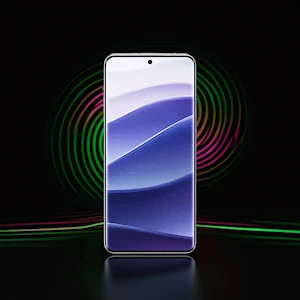The Xiaomi Redmi Note 14 Pro 4G: A Mid-Range Contender That Picks Its Battles
Let’s cut to the chase: The Redmi Note 14 Pro 4G isn’t here to blow your mind with flashy specs. It’s here to do the job. After spending time with it, I’d describe this phone like a reliable hatchback – not the fastest or fanciest, but it’ll get you where you need to go without drama. Here’s what you actually feel when using it.
The Screen That Steals the Show
That 6.67” AMOLED display is the star here. Imagine your favorite streaming show with colors so punchy they pop like neon signs, and blacks so deep they vanish into the bezels. The 120Hz refresh rate makes scrolling through TikTok buttery smooth, though it’s not quite as responsive as flagship-tier screens when you’re rapid-fire tapping in games. The 3,000-nit peak brightness? It’s like carrying a tiny spotlight – I could read texts under direct sunlight without squinting. But here’s the rub: that curved glass feels premium until you realize how nervous you’ll get using it without a case. Xiaomi included Gorilla Glass Victus 2, but I’d still baby this thing.
Performance: A Mixed Bag
The MediaTek Helio G100 chip is… fine. Let me put it this way: It’s like a sous chef that can handle breakfast service but gets overwhelmed during dinner rush. Casual apps? Smooth. Multitasking between Instagram, Spotify, and Chrome? Manageable. But throw Genshin Impact at it, and you’ll see frame rates dip faster than a rookie skier. The cooling system helps – the phone never got uncomfortably warm – but this isn’t a gaming beast. The 8GB RAM keeps things tidy, though heavy users might want the 12GB model.
Battery Life: The Marathon Runner
That 5,500mAh battery is legit. After a day of YouTube binges, GPS navigation, and Slack messages, I still had 20% left at bedtime. The 45W charging isn’t class-leading, but 63% in 30 minutes means you’re never chained to an outlet. Xiaomi’s HyperOS? It’s clean enough, though I caught myself disabling a few preinstalled apps. At least Google services work seamlessly here – no weird China-ROM vibes.
Cameras: One Hit Wonder
The 200MP main camera is like that friend who takes amazing group photos but can’t cook to save their life. In daylight, shots are crisp with vivid colors – I got some legit Instagram-worthy pics of street art. The OIS helps stabilize video, too. But that 8MP ultrawide? It’s there to check a box. Photos get grainy in shadows, and the 2MP macro is practically a party trick. The 32MP selfie cam nails skin tones, though – no over-bleached faces here.
Design: Practical Over Prestige
The polycarbonate back won’t turn heads, but it’s lightweight and survives accidental drops better than glass. IP64 rating means you can panic-splash water on it after spilling coffee, but don’t take it swimming. No LED notifications? Annoying. But the side-mounted fingerprint sensor works so fast I barely missed face unlock.
Who’s This For?
- Yes, if: You want a gorgeous screen for under €300, hate charging your phone daily, and don’t care about 5G (seriously – this is 4G-only).
- No, if: You’re a mobile gamer, need pro-level cameras, or want that “premium feel” metal/glass provides.
The Tradeoffs Xiaomi Made
To hit this price, corners were cut: the plasticky build, mediocre secondary cameras, and last-gen Bluetooth 5.3 (where’s 5.4?). But they invested where it counts – that display and battery combo outclasses most rivals. The lack of 5G might be a dealbreaker for some, but let’s be real: 4G is still plenty fast for most tasks unless you’re downloading 4K movies on the go.
My Take: Would I Buy It?
If I needed a reliable €250-€350 phone for streaming, social media, and light photography? Absolutely. That screen and battery life are worth the compromises. But as someone who tests flagships, I’d miss the polish. Still, for the price? It’s like getting a three-course meal at fast-food prices – not gourmet, but satisfying.
Final thought: This isn’t a phone that’ll make you swoon. It’s one that’ll make you nod and say, “Yeah, this works.” And sometimes, that’s enough.
